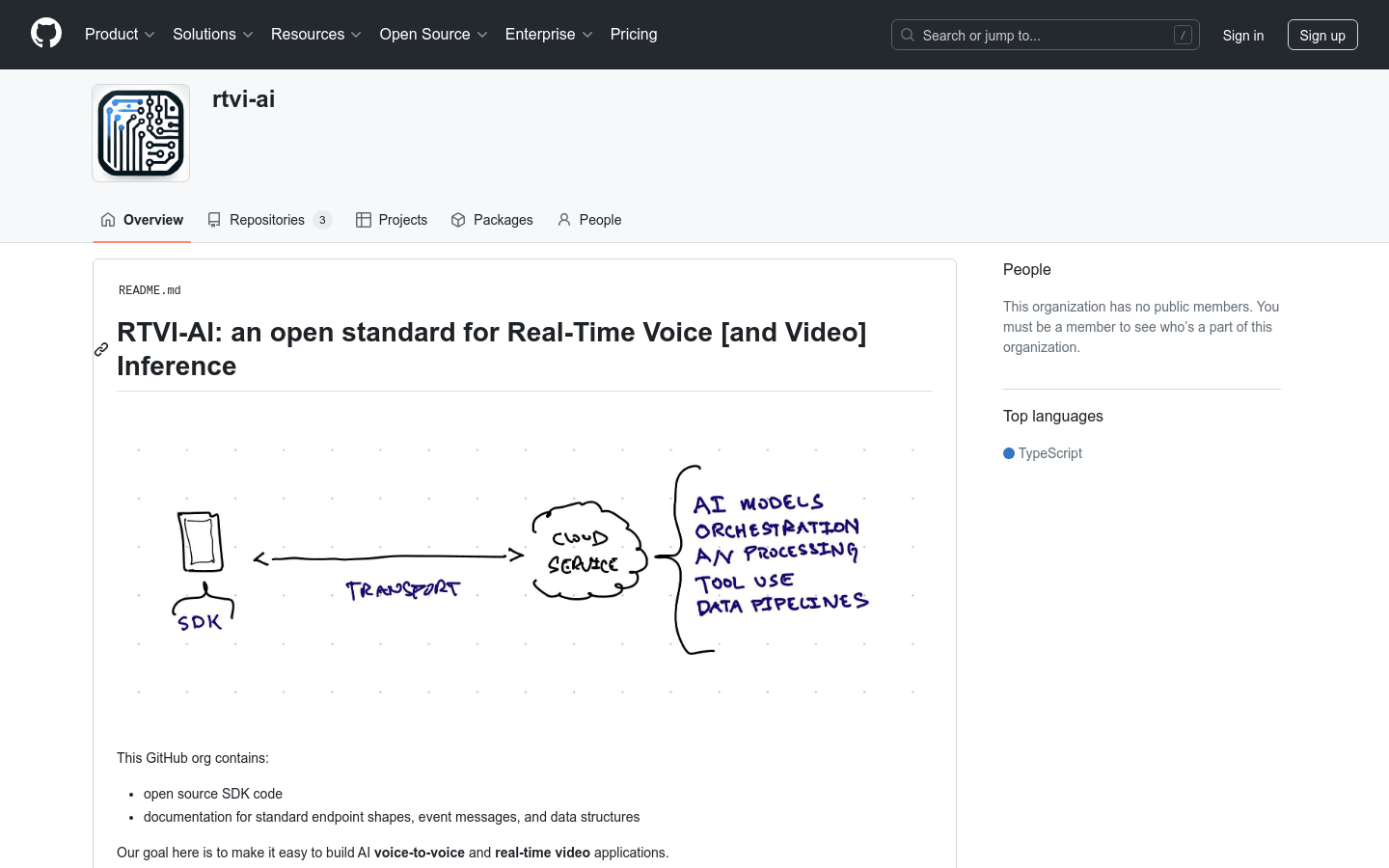

RTVI AI
Overview :
RTVI-AI is an open standard designed to simplify the development of AI voice-to-voice and real-time video applications. It provides open-source SDK code along with documentation for standard endpoint shapes, event messages, and data structures, supporting developers to use any inference service, while enabling those services to leverage open-source tools for complex client solutions in real-time multimedia development.
Target Users :
RTVI-AI is ideal for developers who need to create real-time voice and video applications, particularly those looking to leverage open-source tools and standards to accelerate the development process and seamlessly switch or integrate different inference services.
Use Cases
A medical consultation application built with RTVI-AI that collects patient information and provides health advice.
Integration into a customer service system to provide real-time assistance and information retrieval through voice interaction.
Serves as an assistive tool in educational platforms, offering real-time voice feedback and displaying teaching content.
Features
Supports multiple AI models and voice output configurations.
Provides flexible dialog scripting and external system calling capabilities.
Supports cross-platform development including Web, iOS, Android, Linux, macOS, and Windows.
Offers flexibility for client-side functionality and cloud-side implementations.
Supports WebRTC for real-time audio and video transmission.
Allows dynamic configuration of various service components and processing steps through client-side code.
How to Use
1. Visit the RTVI-AI GitHub page to explore project details and documentation.
2. Follow the documentation to select the appropriate SDK and integrate it into your development environment.
3. Configure the VoiceClient by setting parameters such as baseUrl, system prompts, and microphone activation.
4. Write event handler functions, like trackStarted, to respond to various audio and video events.
5. Utilize the APIs provided by RTVI-AI to dynamically configure service components and processing steps.
6. Test the application to ensure real-time audio and video streaming is accurate and responsive.
7. Adjust and optimize application performance and user experience as needed.
Featured AI Tools

Openvoice
OpenVoice is an open-source voice cloning technology capable of accurately replicating reference voicemails and generating voices in various languages and accents. It offers flexible control over voice characteristics such as emotion, accent, and can adjust rhythm, pauses, and intonation. It achieves zero-shot cross-lingual voice cloning, meaning it does not require the language of the generated or reference voice to be present in the training data.
AI speech recognition
2.4M

One Api
one-api is an open-source OpenAI interface management and distribution system. It supports a variety of large models, including Azure, Anthropic Claude, Google PaLM 2 & Gemini, Zhipu ChatGLM, Baidu Wenxin Yiyan, Xunfei 星火 Cognitive, Alibaba Tongyi Qianwen, 360 ZhiNao, and Tencent Hymenaeum, among others. It can be used for secondary distribution management of keys, is a single executables package ready for use, and comes with pre-packaged Docker images for easy one-click deployment.
AI API tools and services
298.6K














